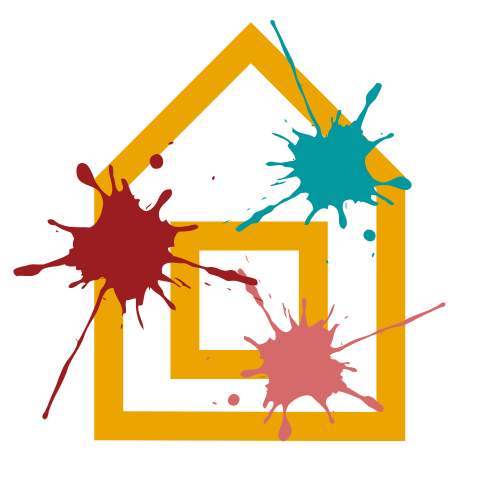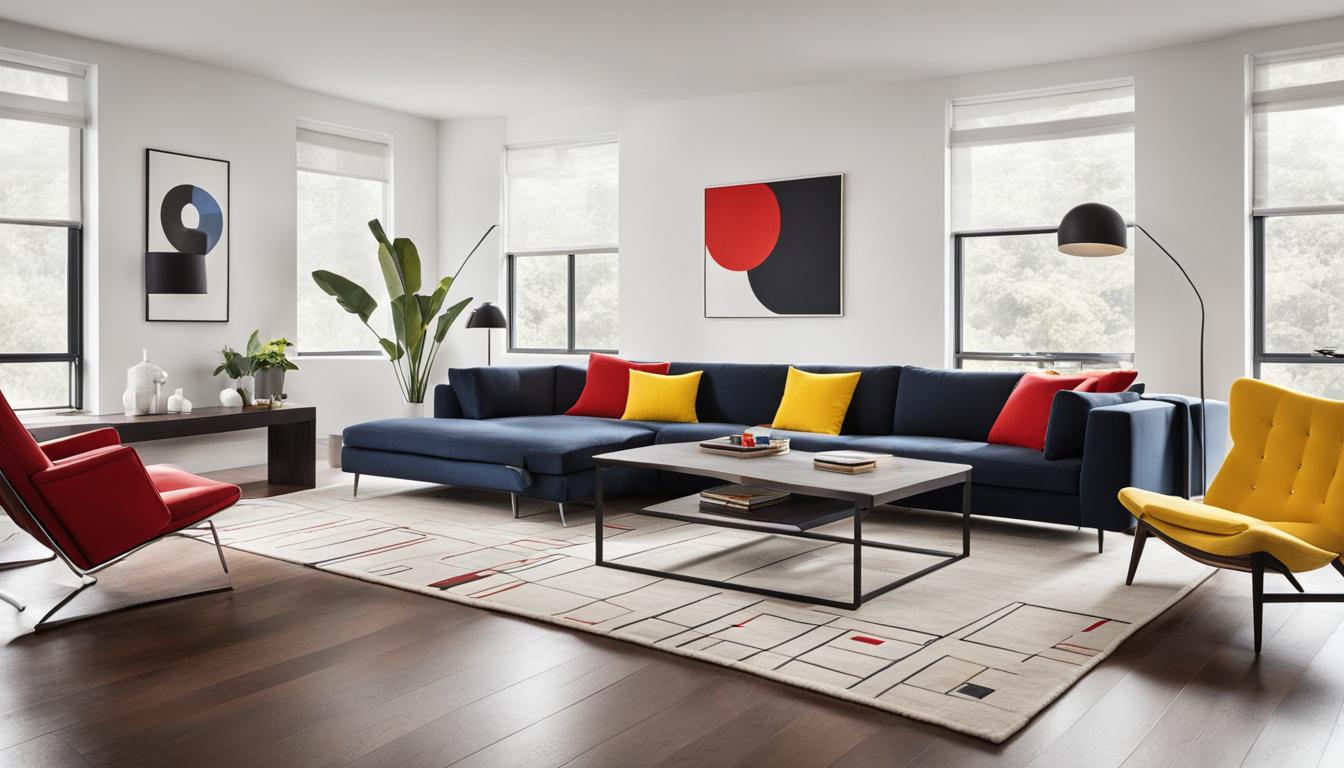Welcome to our guide on embracing style with a stunning Bauhaus living room design. If you’re a fan of minimalist living rooms, modern design, functional furniture, and clean lines, then Bauhaus interior design is the perfect choice for you. Let’s explore this visionary movement that emerged in the early 20th century, blending art, architecture, and craftsmanship to create timeless and effortlessly stylish spaces.
The Bauhaus aesthetic favors minimalist interiors with clean lines and geometric shapes. This style emphasizes simplicity and functionality, stripping away unnecessary ornamentation. The result is a living room that exudes elegance and sophistication. Bauhaus interior design continues to inspire modern aesthetics, making it a popular choice for those who appreciate a harmonious blend of form and function.
In the following sections, we will explore what Bauhaus-style interior design entails, provide tips for achieving it in your own space, delve into its origins and key elements, discuss its influence on modern design, and explore how you can incorporate this style into your home and office. Get ready to transform your living room into a haven of sleek and timeless design.
What is Bauhaus-style interior design?
Bauhaus-style interior design emerged as a visionary movement in the early 20th century, blending art, architecture, and craftsmanship to create functional and visually captivating spaces. At its core, Bauhaus design embodies the belief that design should be both beautiful and practical. The style favors minimalist interiors with clean lines and geometric shapes, focusing on simplicity and functionality.
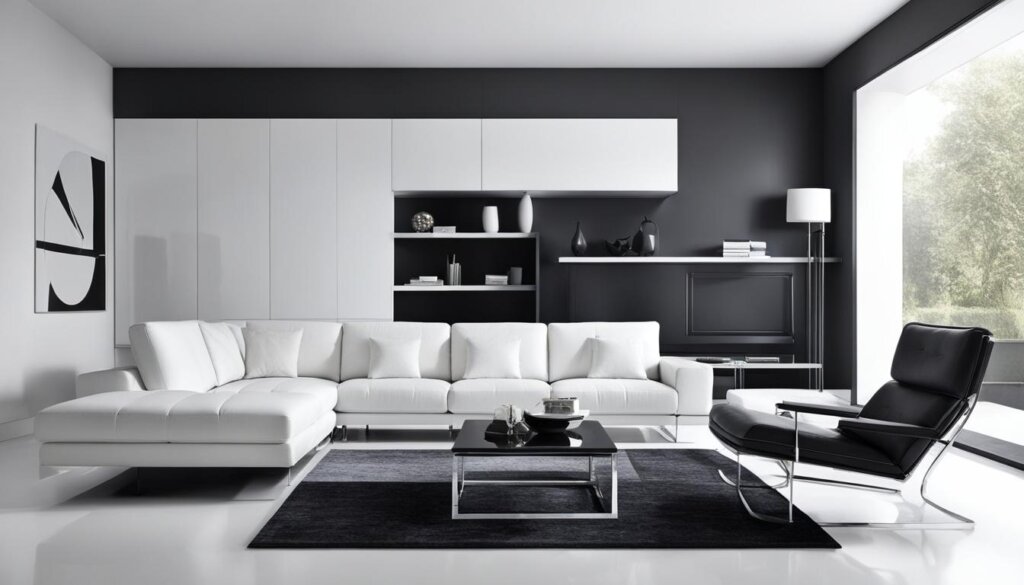
The Bauhaus movement has left an enduring mark on modern design and continues to inspire contemporary aesthetics. It seamlessly combines art and functionality, creating spaces that are both visually pleasing and highly practical. Bauhaus-style interior design is a testament to the idea that art and design can coexist harmoniously, enriching our living environments with their artistic expressions.
10 Tips for Achieving Bauhaus Interior Design
To achieve a Bauhaus interior design in your living room, we recommend following these 10 tips:
-
Take a minimalist approach: Eliminate clutter and embrace simplicity by focusing on sleek lines and basic geometric shapes. This will create a clean and uncluttered space that is characteristic of Bauhaus design.
-
Create an open floor plan: Promote unity and functionality by incorporating an open floor plan. This will allow natural light to accentuate the clean lines and angular forms of the space, enhancing the overall aesthetic.
-
Incorporate geometric shapes: Introduce geometric shapes through furniture, decor, or architectural elements. This will add visual interest and create a visually captivating environment.
-
Play with bold colors: Strategically use bold primary colors like red, yellow, and blue to create focal points. This will add vibrancy and energy to the space while staying true to the Bauhaus style.
-
Add industrial flair: Enhance the design with industrial elements such as concrete and steel. Incorporate features like open ductwork and industrial lighting to infuse the space with an edgy and contemporary feel.
-
Focus on harmonizing form and function: Select practical furniture and decor items that seamlessly integrate with the overall design. This will ensure that the space not only looks beautiful but also remains functional.
-
Hand select artwork and décor: Choose artwork and decor that emphasizes simplicity and visual balance. Incorporate primary colors or bold contrasts to add visual interest to the space.
-
Create contrast in materials: Pair smooth and textured surfaces to add visual depth and appeal. Contrasting materials will enhance the overall richness and complexity of the design.
-
Include organic shapes: Introduce organic shapes to add natural elegance and softness to the space. These organic elements will create a sense of balance and visual harmony.
-
Enhance transparency: Maximize the use of windows, skylights, and glass doors to invite ample daylight into the space. This will accentuate the clean lines and simplicity of the design, while also enhancing transparency and connectivity with the outside environment.
By following these tips, you can successfully achieve a Bauhaus interior design in your living room. Incorporate a minimalist approach, utilize geometric shapes, bold colors, and industrial flair, and don’t forget to focus on the harmonization of form and function. Hand-select artwork and decor, create contrast in materials, include organic shapes, and enhance transparency to truly capture the essence of Bauhaus design.
The Origins of Bauhaus Interior Design
Bauhaus interior design has its roots in the renowned Bauhaus School of Art and Design in Germany. Established in the early 20th century by architect Walter Gropius, the Bauhaus movement aimed to bridge the gap between art and industry, promoting modern design and industrial production. Bringing together artists, designers, and architects, the Bauhaus school envisioned a new kind of art education that prioritized simplicity, functionality, and rationality in design.
The Bauhaus School of Art and Design had a profound impact on modern art and design, revolutionizing the way we perceive form, function, and aesthetics. By emphasizing clean lines, minimalist approaches, and the use of industrial materials, Bauhaus design challenged traditional norms and shaped the trajectory of modern design. Today, the influence of Bauhaus can be seen in various fields, from architecture to graphic design.
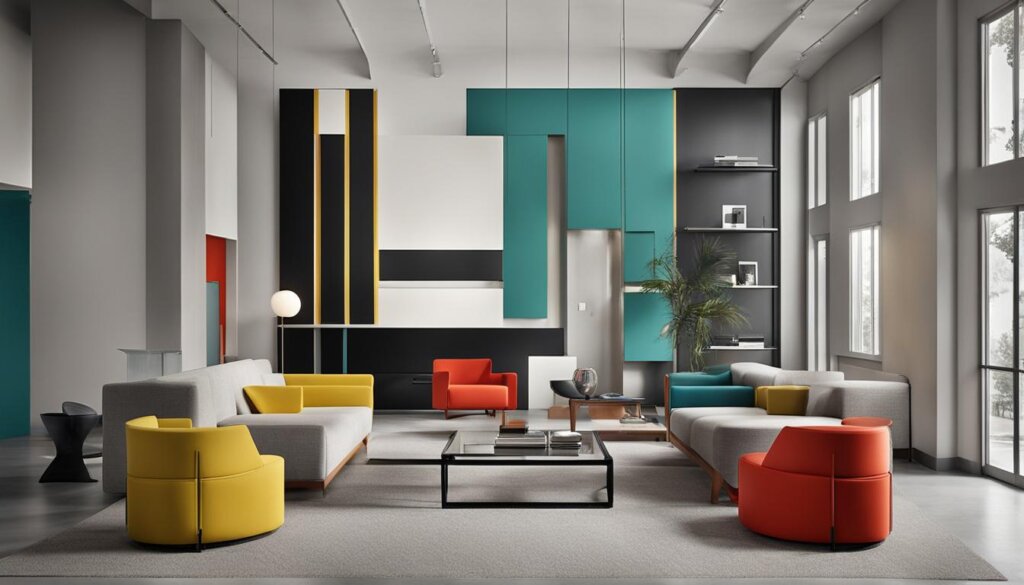
Key Elements of Bauhaus Style
Bauhaus style is characterized by several key elements that have made it a lasting influence on modern design. The style emphasizes the principle of form follows function, where the design of an object is based on its intended function. Bauhaus spaces often incorporate geometric shapes, simple design, and industrial materials like wood, metal, concrete, and glass. Simplicity and minimalism are key aspects of Bauhaus style, with clean lines and uncluttered spaces being prominent features. The use of primary colors, especially red, blue, and yellow, adds vibrancy and focus, while minimal ornamentation highlights the minimalist approach.

How to Incorporate Bauhaus Interior Design Style
To incorporate Bauhaus interior design style into your living room, we have compiled a list of tips and suggestions:
- Look for simple furniture designs that are functional and made from materials like wood, glass, metal, or concrete. Opt for clean lines and simple shapes to achieve the Bauhaus aesthetic.
- Use practical materials for your furniture and interior design. Prioritize durability and ease of maintenance to ensure longevity and functionality.
- Minimize clutter to create a clean and uncluttered look. Bauhaus interior design favors a minimalist approach, where every item serves a purpose.
- Add pops of color for a modern appeal. Incorporate primary colors strategically through artwork or accessories to create focal points within the space.
- Emphasize natural and artificial lighting to enhance the overall ambiance. Consider multiple lighting options for different areas within the living room to create an energetic and bright environment.
- Embrace experimentation and try new things. Find furniture and decor pieces that work for your space while prioritizing simplicity, comfort, and enjoyment. The Bauhaus style encourages creativity and individual expression.
By following these tips, you can successfully incorporate Bauhaus interior design style into your living room. Remember to prioritize simple furniture designs, practical materials, and minimal clutter, while adding pops of color and emphasizing lighting. Don’t be afraid to embrace experimentation and make the space your own.
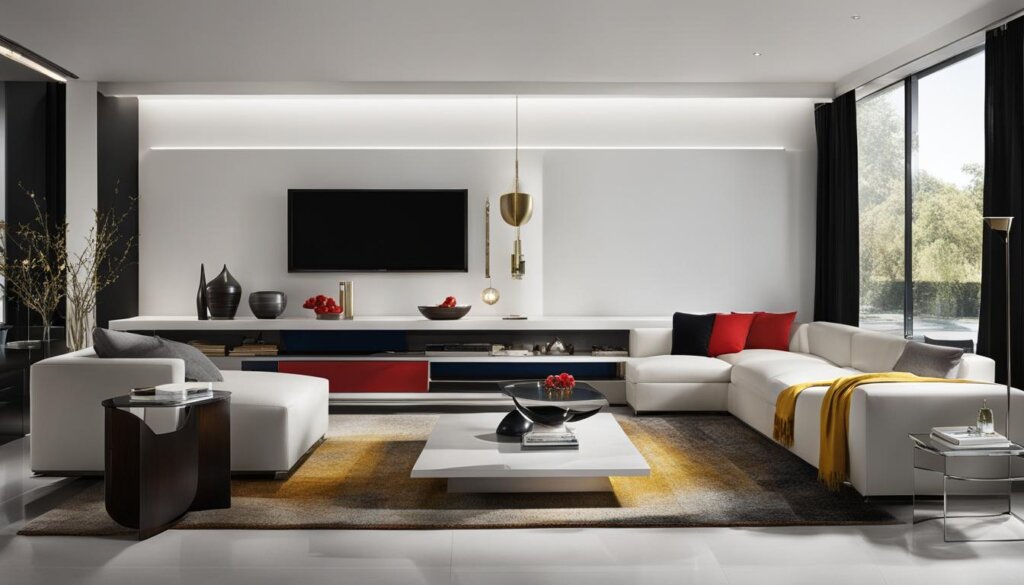
Influence of Bauhaus Style on Modern Design
Bauhaus style has had a profound influence on modern design, shaping the way we think about form, function, and aesthetics. The principles of Bauhaus, such as minimalism, simplicity, and the use of industrial materials, have influenced various design styles.
One of the key areas where the influence of Bauhaus style can be seen is in the embrace of minimalism. Bauhaus design favors clean lines, uncluttered spaces, and a focus on functionality. This minimalist approach has become a hallmark of modern design, creating spaces that are visually appealing and efficient.
Furthermore, Bauhaus style has played a significant role in shaping modernism and the International Style. These movements prioritize simplicity, functionality, and the use of industrial materials in architecture and design. Bauhaus ideas have also seeped into contemporary graphic design, with its emphasis on clean lines, simple forms, and a focus on functionality.
The influence of Bauhaus style can be observed in the integration of clean lines and simple forms in architecture. Buildings inspired by the Bauhaus movement often feature sleek, geometric designs that prioritize functionality while still maintaining an aesthetic appeal. This style of architecture has become a symbol of modern design and is widely celebrated for its timeless elegance.
Impact on Graphic Design
Bauhaus style has also left its mark on graphic design. The movement’s emphasis on simplicity, minimalism, and functionality has influenced contemporary graphic designers. Graphics and logos now often feature clean lines, bold contrasts, and a focus on conveying information in a clear and efficient manner.
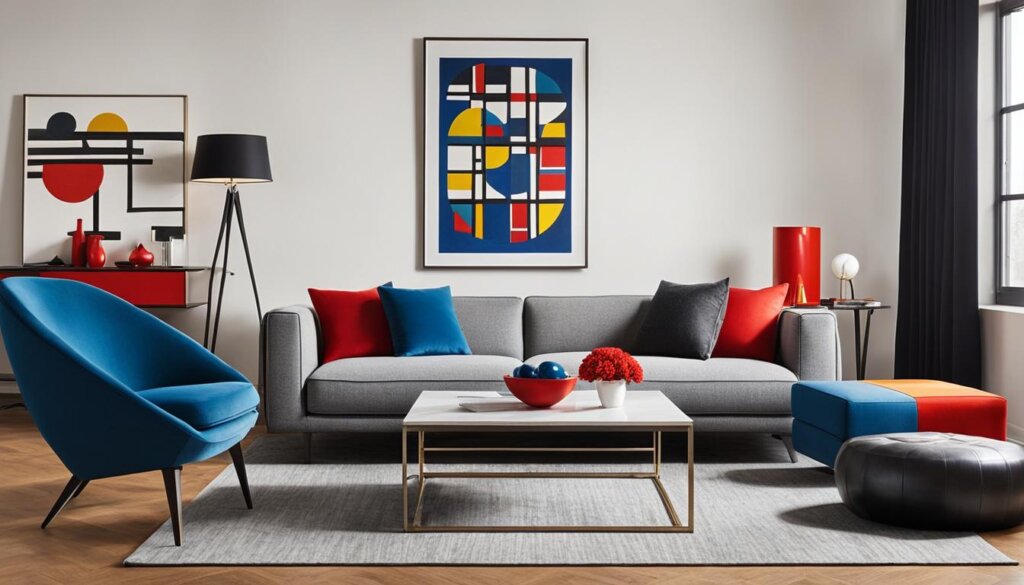
The image above exemplifies the influence of Bauhaus style on graphic design, with its minimalistic approach, geometric shapes, and bold colors. This aesthetic is widely used in various industries, including advertising, branding, and web design.
To sum it up, Bauhaus style has had a lasting impact on modern design. Its principles of minimalism, simplicity, and the use of industrial materials have influenced various design styles, including modernism, the International Style, and graphic design. The legacy of Bauhaus continues to inspire contemporary aesthetics, creating spaces and visuals that are both functional and visually captivating.
Bringing Bauhaus Style Into Your Home and Office
You can easily incorporate the iconic Bauhaus style into your home and office decor by applying its timeless principles. The versatility of Bauhaus design allows you to mix different styles and eras, creating a unique aesthetic that still pays homage to the simplicity and elegance of Bauhaus.
Start by experimenting with minimalist and functional furniture, which are key elements of Bauhaus style. Choose pieces that prioritize clean lines and practicality, while still providing comfort and functionality. Consider using materials like wood, glass, metal, or concrete to achieve the sleek, minimalist look typical of Bauhaus interiors.
When it comes to color palettes, stick to simple and neutral tones for a clean and inviting atmosphere. This will highlight the architectural elements and furniture shapes in your space, allowing them to take center stage. However, don’t be afraid to add pops of color through carefully selected artwork or accents to infuse vibrancy and personality into the room.
Embrace the timelessness of Bauhaus style by capturing its essence through clean lines and uncluttered spaces. Eliminate excess decorations and strive for a minimalist aesthetic that fosters a sense of calm and simplicity. By bringing elements of Bauhaus style into your home and office, you can create spaces that are not only visually appealing but also functional, versatile, and inviting.
